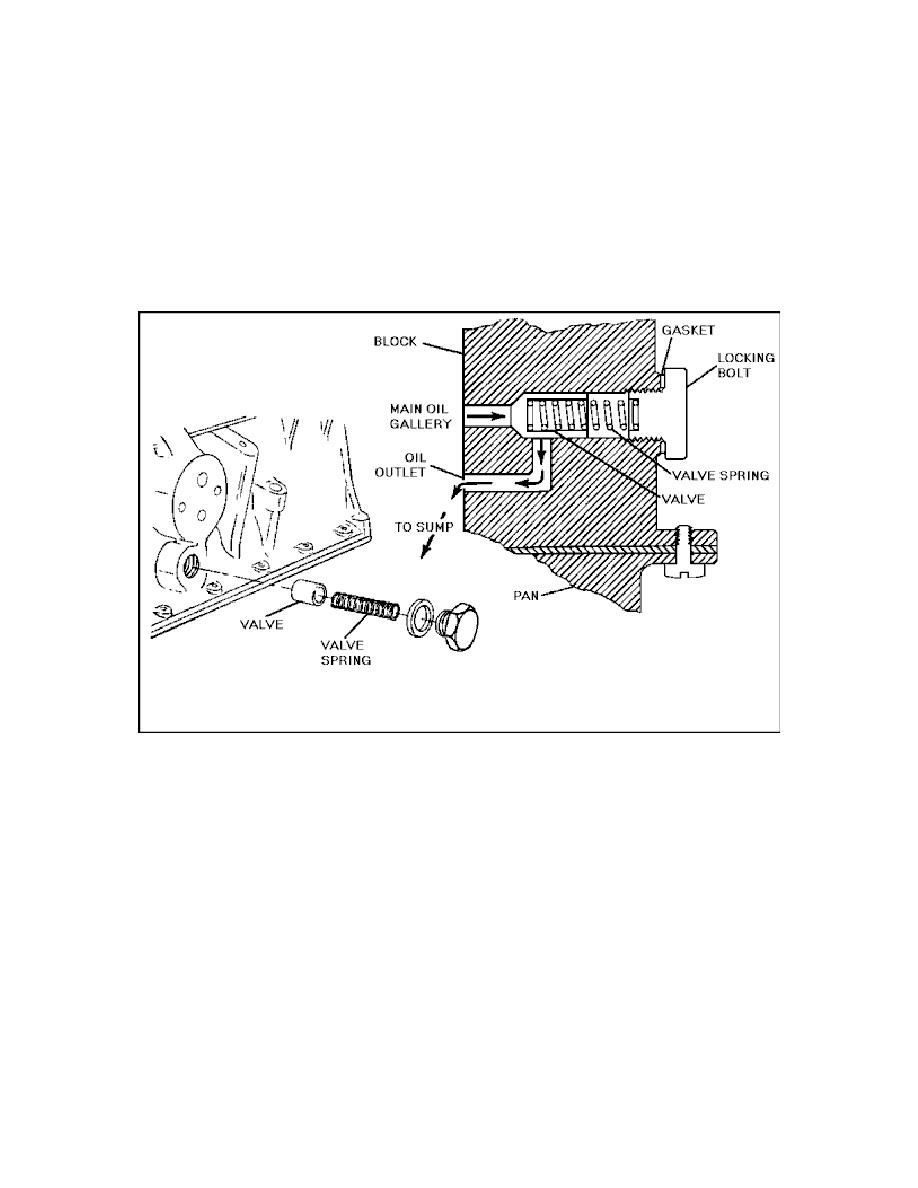
Lesson 4/Learning Event 1
Notice that the inner rotor is not centered in the outer rotor. The teeth-like lobes of the two rotors are in
mesh only at the bottom. As the two rotors turn to the left (counterclockwise), their lobes separate. The space
between the rotors fills with oil. As the rotors continue to turn, the lobes start coming back together. As the
lobes come together, oil is squeezed out the discharge sides of the pump.
All of the oil pumps discussed are capable of pumping oil under high pressure. In fact, the pressure such
pumps can produce is too high for the lubrication systems used in automotive engines. An oil pressure relief
valve is used to control the oil pressure at the desired amount (usually 60 PSI or less).
FIGURE 59. OIL PRESSURE RELIEF VALVE.
The relief valve, which is also known as a pressure regulator valve, is usually placed in the main oil line (also
known as the oil gallery) leading from the pump or built into the discharge side of the pump itself.
105




 Previous Page
Previous Page
